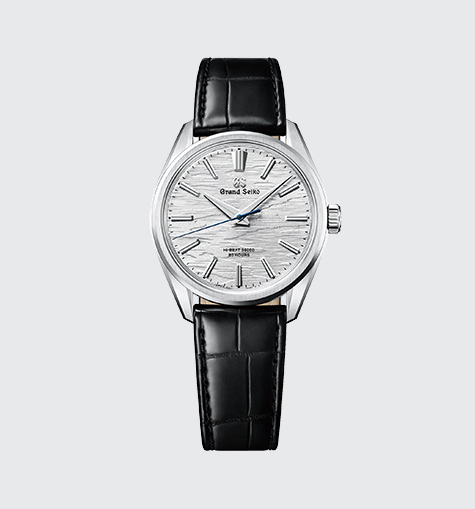Caliber Stories
Produced by chronos for Grand Seiko
The Highly Anticipated Manually Wound 10-Beat Caliber 9SA4 and its Sensory Appeal,
Part 2: Movement
Heightening the sensory value, a Grand Seiko like none before it, the SLGW002/003
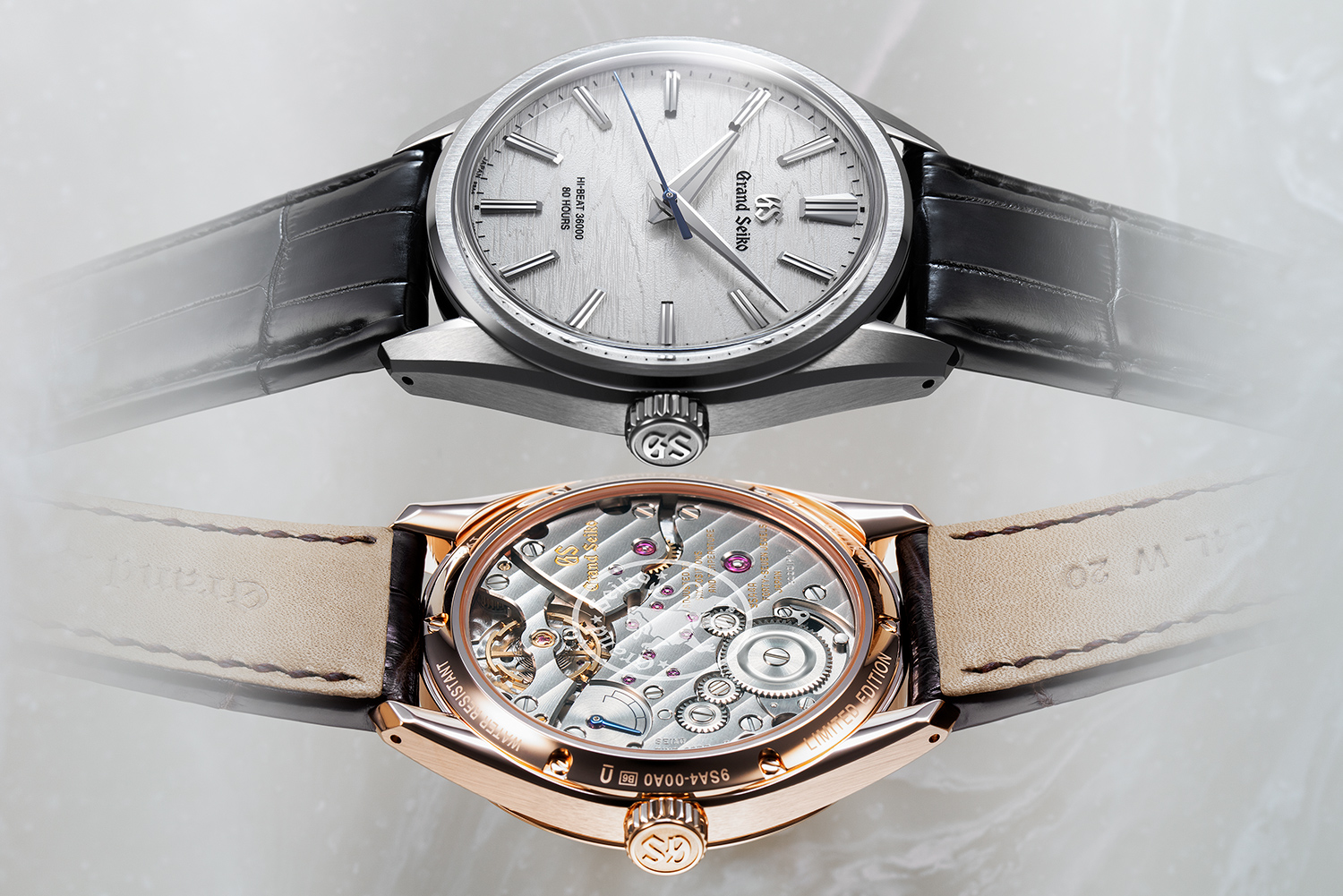
Grand Seiko rewrote the standard for mechanical watch accuracy with Hi-Beat in the latter 1960s. Half a century later, Grand Seiko achieved game-changing high accuracy with the new Caliber 9SA5 movement. Mechanisms without parallel, like the Grand Seiko Free-sprung Balance and Dual Impulse Escapement, were all devised in the pursuit of accuracy. Joining in this pursuit is the manually wound mechanical Caliber 9SA4. Although Caliber 9SA4 is based on Caliber 9SA5, the Grand Seiko development team did not intend the new manually wound mechanical movement to be thin and simple like Caliber 9SA5. What they were after in Caliber 9SA4, in addition to high performance, was a dialog with the watch.
- Photographs by Eiichi Okuyama
- Text by Masayuki Hirota (Editor-in-Chief of Chronos Japan Edition)
A movement that feels great to wind
With a manually wound movement, which lacks an automatic winding mechanism, the mainspring needs to be wound by turning the crown each time the watch is used. As mechanical watches came into wide use, many movements were created with automatic winding, in which the mainspring is wound by rotor motion. Grand Seiko is no exception to this trend. The revival of the manually wound movement, whose role had once ended in the 1970s, had to wait until 2001.
Caliber 9SA5 further raised the Grand Seiko standard. At the time of its development, says Kohei Egashira, who leads product planning, it was already planned to add a manually wound movement. Considering the accolades received around the world by the Hi-Beat manually wound movement in the 1960s, it seems only natural that the development team would create a manually wound movement based on the Hi-Beat Caliber 9SA5. It was not their intention, however, simply to remove the automatic winding mechanism from the Cal.9SA5 and build a simple movement. As a Grand Seiko, high accuracy was of course an absolute requirement. One reason they deliberately chose manual winding, though, was their desire to add “dialog with the watch.” What this meant specifically was the feel of winding the crown.

Caliber 9SA4 was developed with Caliber 9SA5 as its base. While keeping the basic wheel train structure, balance wheel with hairspring, and other elements, some 40 percent of the movement was newly designed. Since the date display is omitted, the crown has been changed to a one-pull type, and the dial side is given a flat finish befitting a movement dedicated to manual winding.
A manually wound movement, in which the mainspring is wound up by turning the crown, has several advantages. One is that the movement can be made thin since there is no automatic winding mechanism. Another is that hand winding can be given a pleasurable sensation. With ordinary automatic winding movements, turning the crown causes the automatic winding mechanism to rotate at high speed. Besides the problem of mechanism wear, it does not feel completely smooth. This is why some watch enthusiasts prefer a manually wound movement. In response, a few niche players came to pursue winding feel in their manually wound movements in addition to performance.
In developing Caliber 9SA4, as well, a good winding feel was one of the requirements. But what constitutes a good winding feel? That varies widely from one person to the next. After repeated discussions, the development team concluded that the ideal sensation was the distinctive “snap” when the part known as the stop click, or simply “click,” engages the ratchet wheel during winding. Indeed, this is a sensation loved by many watch enthusiasts. The hurdle to achieving this, however, was extremely high.
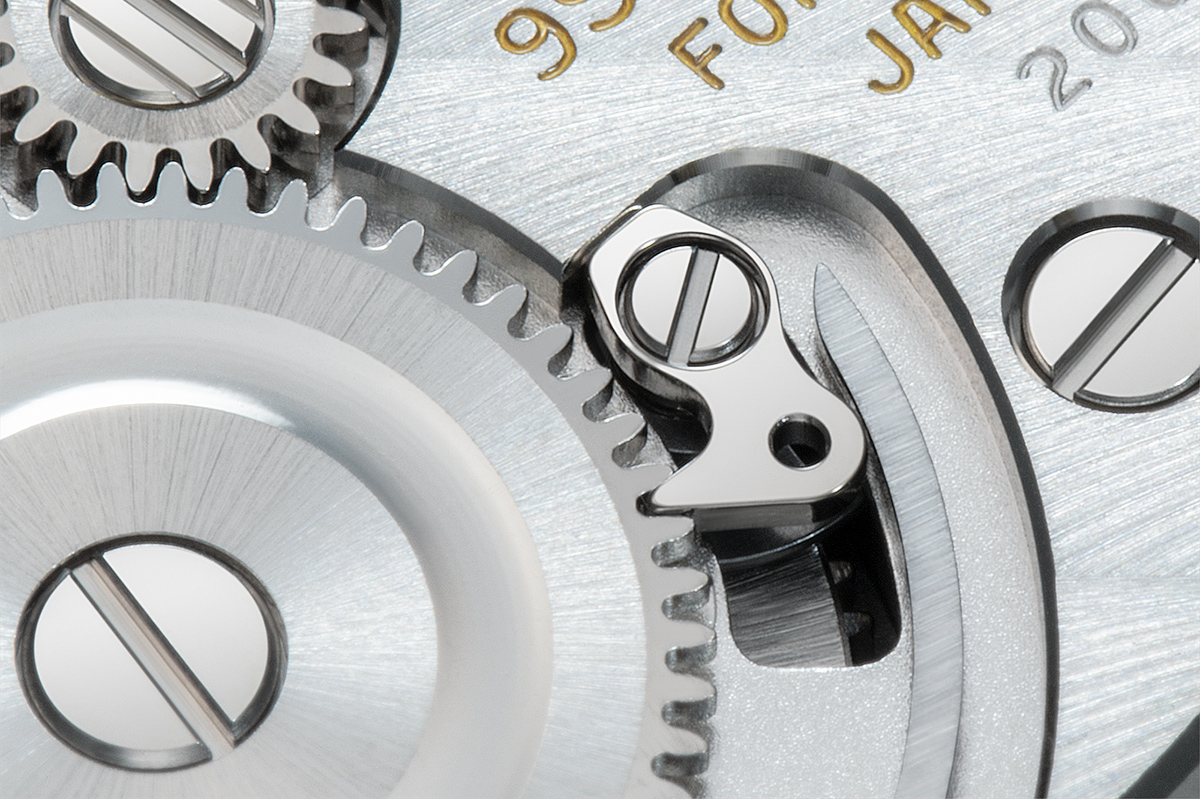
What gives Caliber 9SA4 its superb winding feel is the sliding click, with its bird-like shape. As the crown is being turned, the click slides while engaging the teeth of the ratchet wheel and returns to its position by spring force.
The mainspring that is the driving force of a mechanical watch is housed in a part called the barrel. The ratchet wheel is attached to the top of this barrel. This is not only to convey to the barrel the rotation from turning the crown but also to prevent the barrel from reversing, by engaging with the click. The distinctive “snap” of the manually wound movement that watch fans love so much comes from the contact between the ratchet wheel and click.

Caliber 9SA4 uses two barrels to increase the time between windings. The click is strategically placed to bridge the space in between. With most watches, the head of the click oscillates centered on the axis. With this model, however, the head does not simply oscillate but also slides resulting in an excellent winding feel while also building in durability befitting Grand Seiko.
The only way to achieve the desired sensation was to change the design and material of the click. Yuya Tanaka, who designed the movement, came up with four designs for the click, including prototypes. Why go to that extent? Because it was a Grand Seiko. If you want to go beyond simply improving the feel to creating movement and raising durability, the hurdles suddenly become all that much higher.
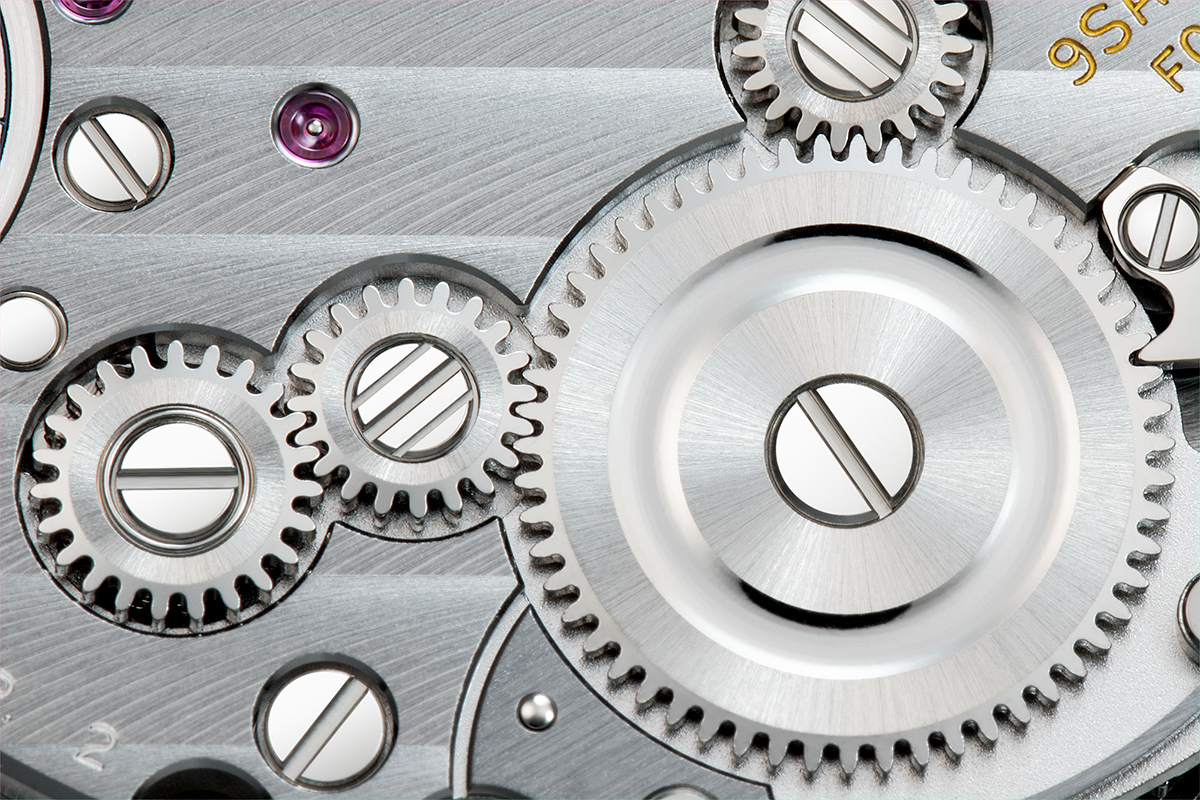
Photo of the crown wheel, which conveys the crown rotation to the barrel, and the ratchet wheel. A single intermediate wheel was inserted in between due to a lack of space for a crown wheel of a normal size. By redesigning the mechanism, the number of crown turns was reduced in winding, and durability was improved.
In the process, Tanaka developed a completely new kind of click, one that looks like a wagtail bird and slides as it engages the ratchet wheel. In seeking to raise the durability, the design was revised many times over.
“To convey the distinctive snapping sensation, the click spring of the 9SA4 was designed to deliver a strong force.” Then, after having around fifty people test the movement, the strength of the parts was increased so that the crown could withstand winding with the strongest force.
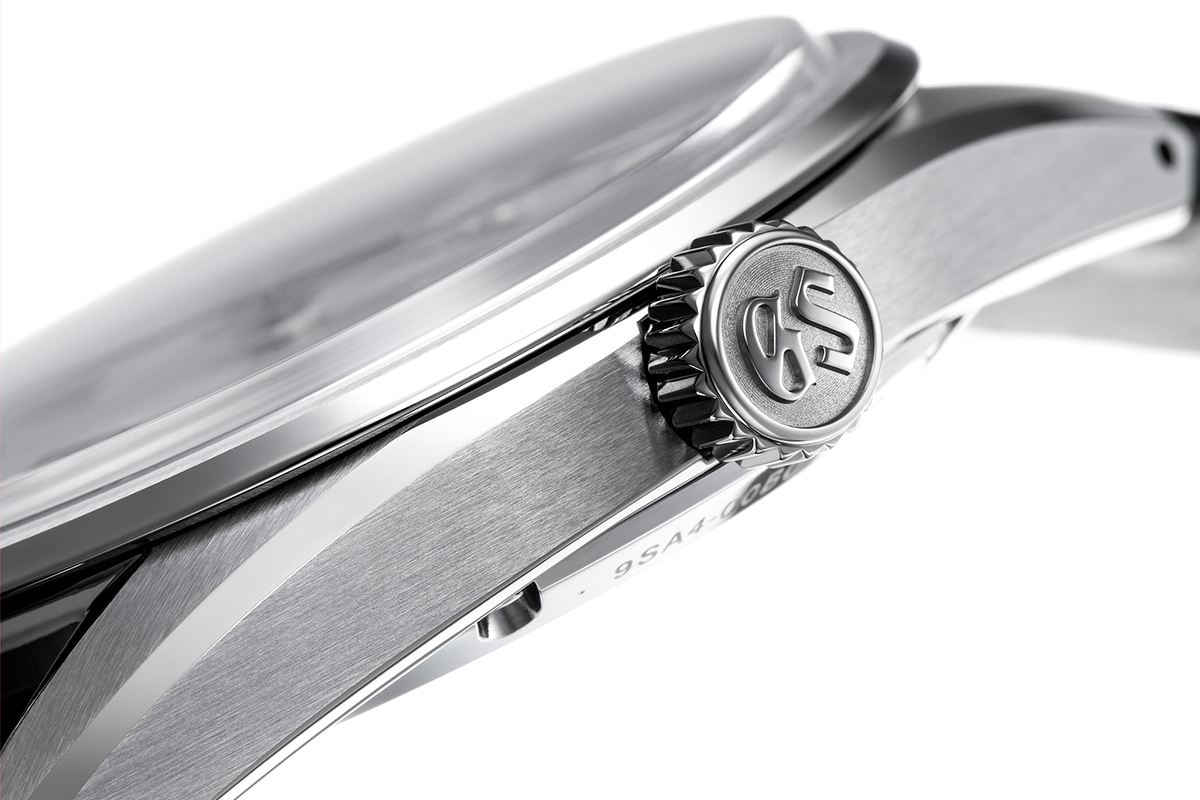
The crown was redesigned on watches equipped with Caliber 9SA4 in pursuit of winding feel. A larger crown is easier to wind but places a greater burden on the works. Making the crown smaller reduces this burden but winding becomes more difficult. The development team asked around fifty people to wind the crown and then optimized the crown size and other properties.
In the true Grand Seiko spirit, the click and surrounding parts were designed taking into consideration the waterproof packing added to the crown. The packing inside the crown can shut out water, but increasing the thickness of this packing inevitably sacrifices some of the winding feel. The click and surrounding parts were developed with the feel of this packing in mind. Then by not making the crown too large, the mainspring was made easy to wind and the burden on the movement was minimized. Everything including the size of the crown went into achieving both winding feel and durability.
The newly designed power reserve indicator contributes to thinness
With Caliber 9SA4, a power reserve indicator was added to the back of the movement. This is the ideal mechanism for a manually wound movement, whose mainspring needs to be wound by hand. Caliber 9SA5, on which it is based, however, lacks the space for housing a power reserve indicator mechanism. Adopting a power reserve indicator becomes all the more difficult due to the issue of keeping down the thickness of the movement.
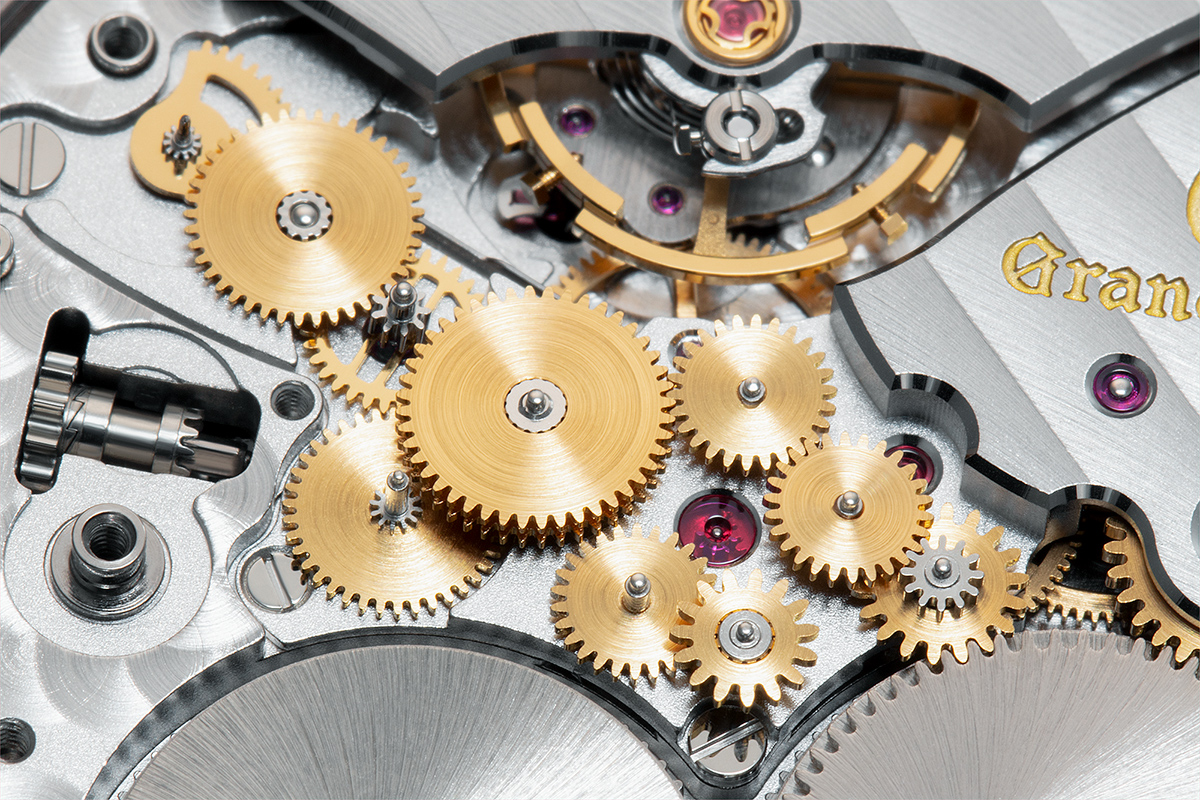
The power reserve indicator mechanism is ingeniously placed in a narrow space. Although increasing the number of gears lowers the transmission efficiency, an accurate display and high efficiency were achieved by redesigning the shape of the power reserve train wheel and adopting small planetary gears.
Normally, to make a compact power reserve indicator mechanism, large gears are used for a better reduction ratio. Caliber 9SA4, however, lacks the space to house large gears. Using smaller gears, on the other hand, increases the number of gears needed, resulting in greater mechanism resistance.
The development team thus decided to use not just the lateral space but also the vertical space, and devised a special gear tooth shape, succeeding in fitting the highly efficient power reserve indicator into the available space. The increase in movement thickness due to the power-reserve indicator was kept to a minimum by making it a step lower than the movement bridge.
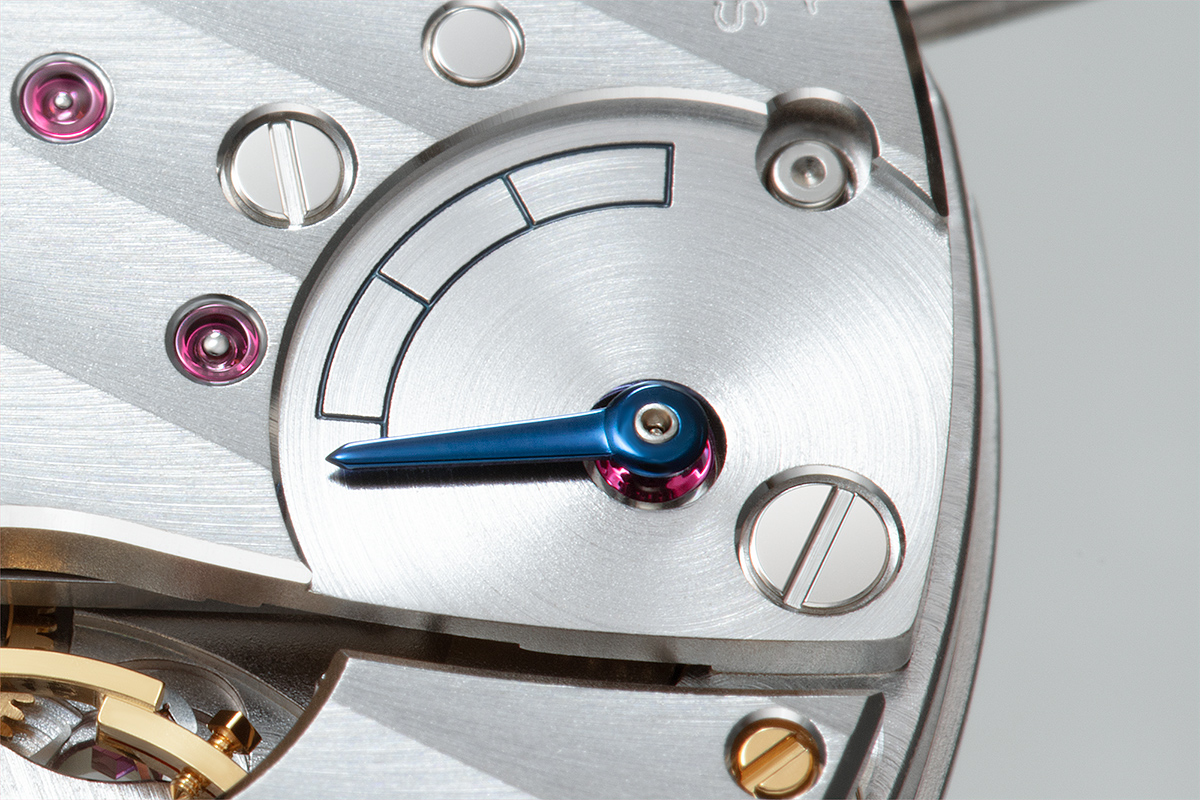
Caliber 9SA4, demanding thinness without sacrificing durability. The care taken to this end can be seen in the power-reserve indicator hand. The movement thickness is minimized by carving out a space for the indicator lower than the rest of the movement bridge. As a result, the movement is as close as possible to the case back.
A thin, manually wound movement for everyday use running at 10 beaters per second
Caliber 9SA4, pursuing not just high performance but “dialog with the watch.” Hearing just this much about it, one might think the new Hi-Beat manually wound movement was aimed primarily at watch aficionados. In reality, the development team did not stray from the basic concept of a movement suited to everyday use. Since the movement was made as slim as possible, the case thickness is less than 10mm. Having a power reserve of approximately 80 hours, its ease of use is atypical for a manually wound watch. And of course, the mechanisms inherited from Caliber 9SA5 give it performance a world apart from the garden variety manually wound watch.
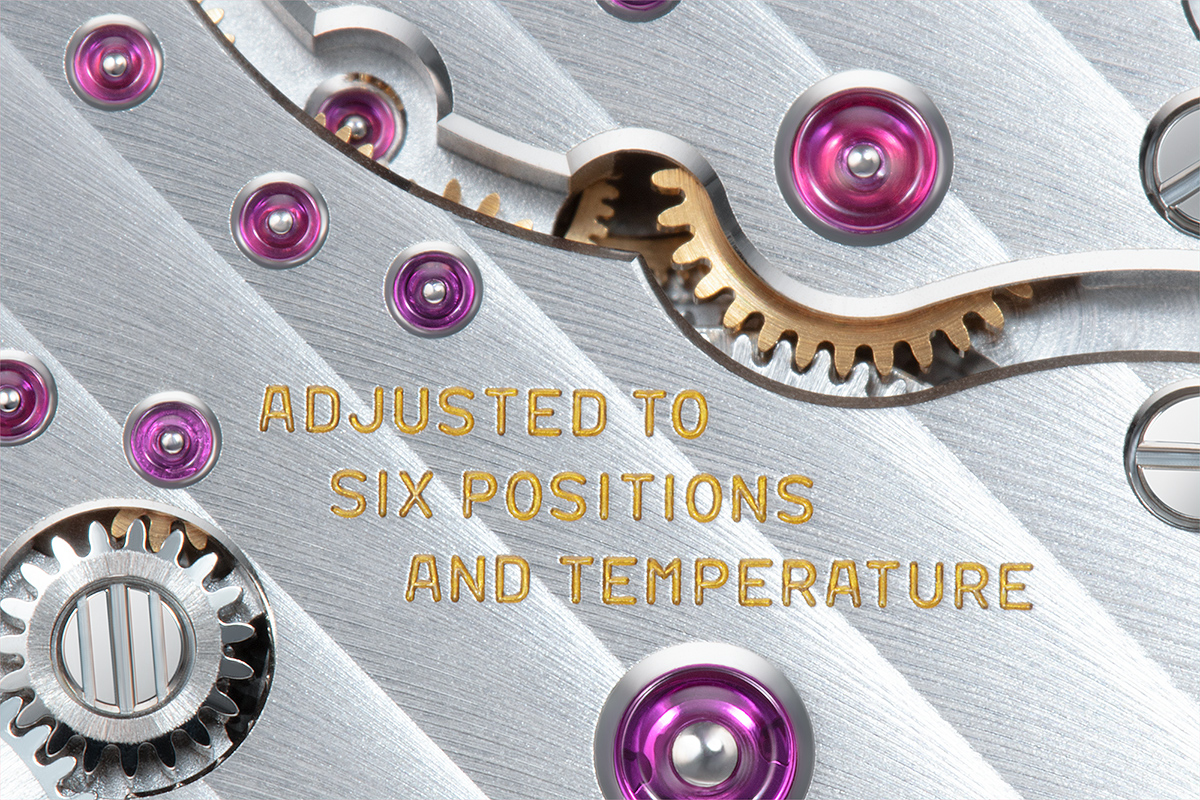
The lack of a rotor, a strong point of a manually wound movement, means the entire movement can be seen via the see-through back. Emphasizing this, the bridges supporting the gears and other parts have a flowing design, while the surface has a very light wave-shaped Shizukuishi River finish. Note also the red hole jewels for reducing the friction of the gears and other parts. The hole jewels, with their three-dimensional effect, have a quality unexpected in a serially produced movement.
To be honest, today as in the past, a manually wound movement remains a niche item. Yet the Caliber 9SA4 movement, combining uniqueness with high accuracy and high practicality, may just become the one that changes this awareness. Not only watch lovers, but anyone looking for a slim and useful dress watch would do well to remember the name Caliber 9SA4.
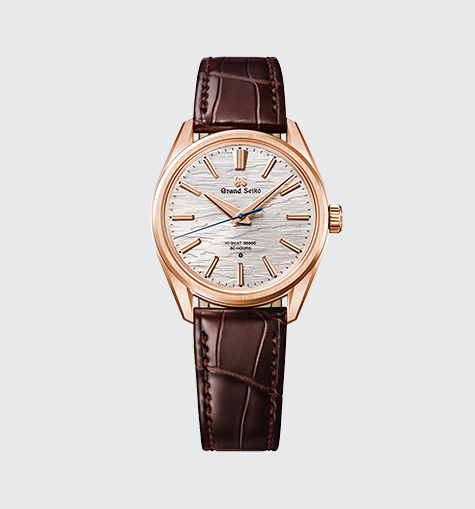
SLGW002
[ Grand Seiko
Evolution 9 Collection ]
